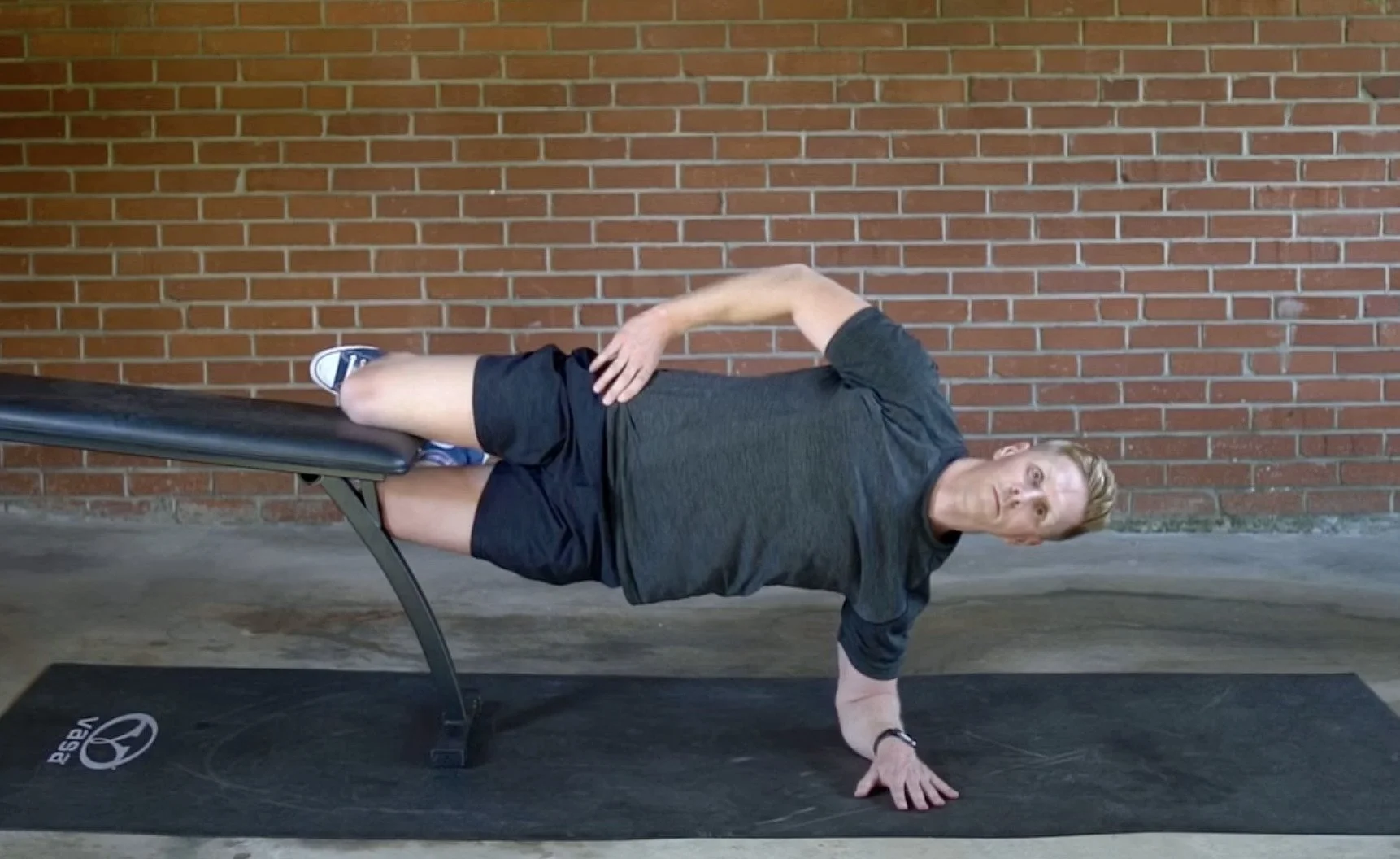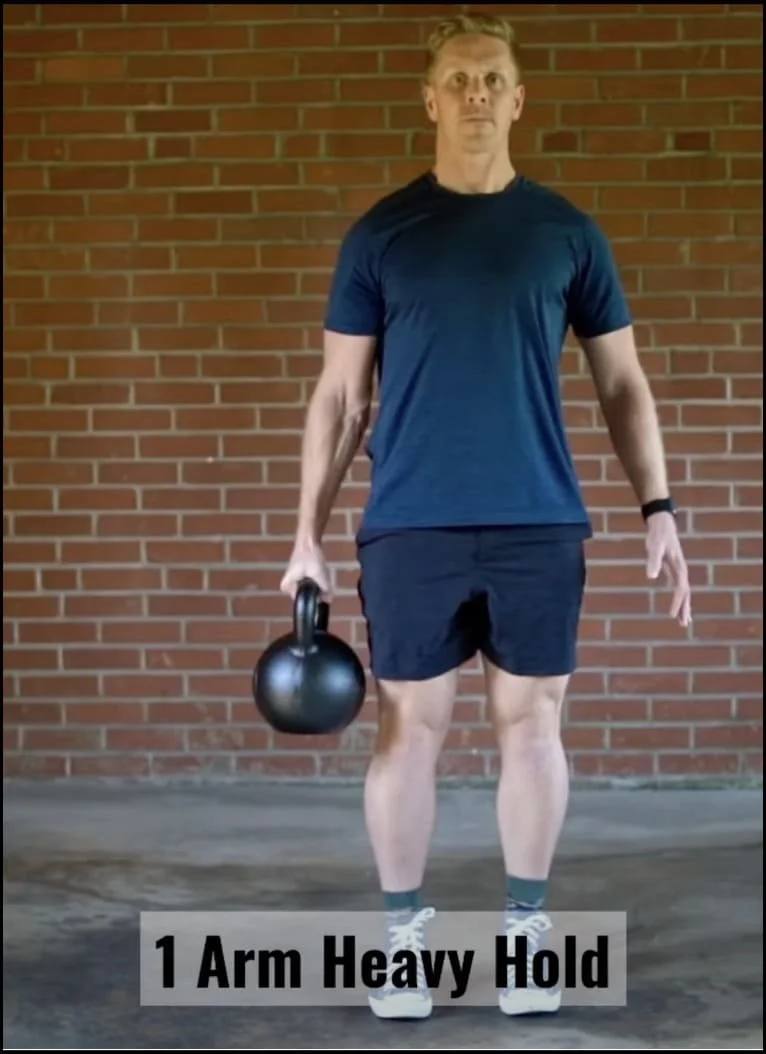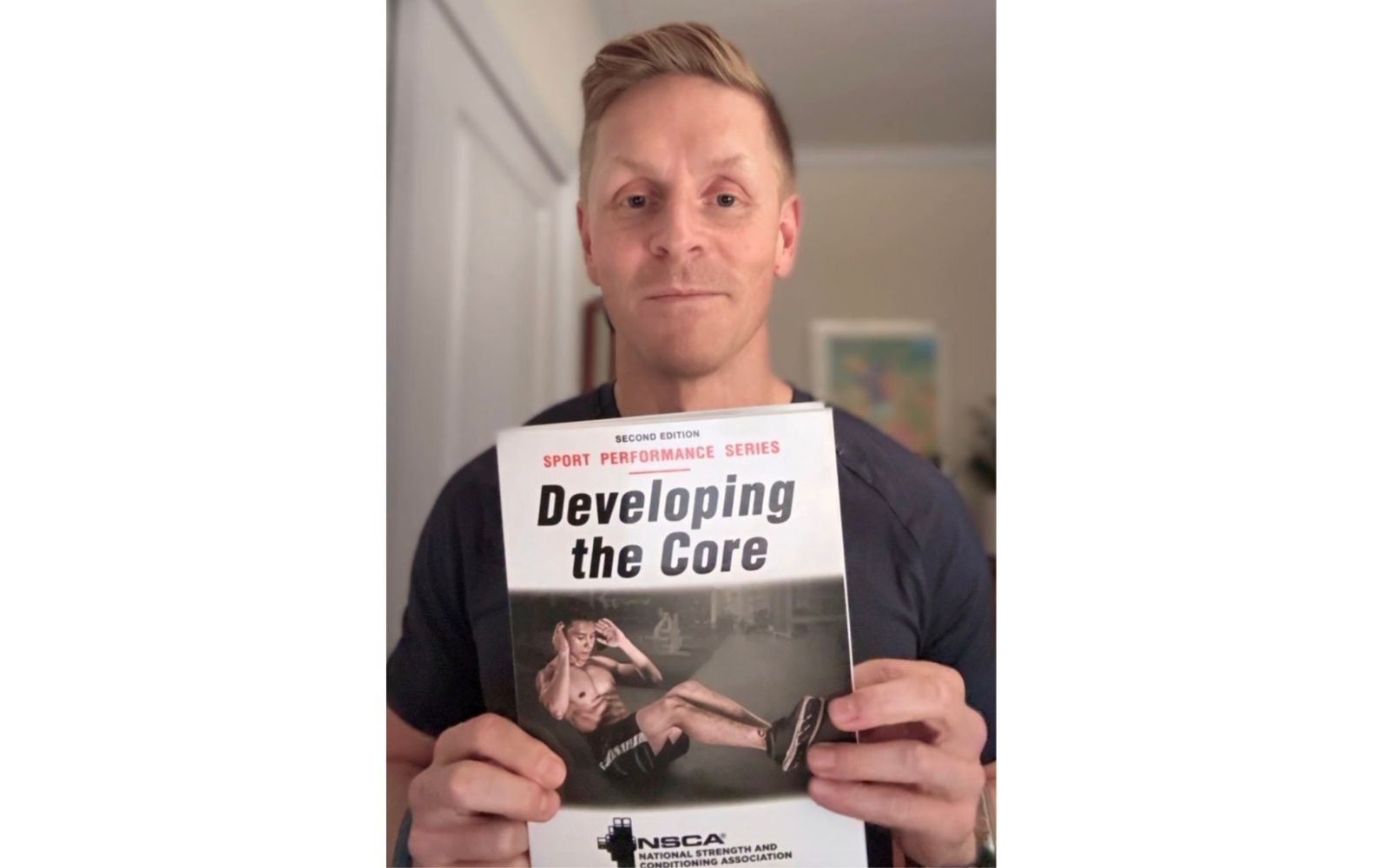Best Core Workouts for Swimmers: Build a Stronger, Faster Body in and out of the Pool
/If there's one common thread I’ve seen in every elite swimmer I’ve coached, it’s this: strong swimmers have strong cores. Whether it’s holding a tight streamline off the wall or maintaining an efficient body line through a 200 IM, core control is non-negotiable. But too many athletes overlook this vital part of training.
Today, I’m breaking down why core training matters and how to build a swimmer-specific program that translates directly to speed, efficiency, and injury prevention in the water.
Core Stability
Strengthen the engine behind every stroke. This 4-week core stability program builds control, power, and protection for your spine – helping you swim faster and stay injury-free.
Why Core Strength Matters in Swimming
Before we dive into the workouts, let’s define what we mean by "core." It’s not just your abs — it's the entire trunk: obliques, lower back, hips, and deep stabilizing muscles. This group of muscles connects your upper and lower body, transferring force and controlling movement through every stroke.
Does swimming work your core? Yes - but not enough to develop real strength on its own. Swimming challenges your core, especially during starts, turns, and underwater phases. But to truly develop swimmer abs and reduce drag, dryland core workouts for swimmers are essential.
A strong core helps with:
Better body position and reduced resistance
More efficient transfer of power from the arms and legs
Increased stability during starts, turns, and finishes
Injury prevention, especially in the shoulders and lower back
Principle #1: Build Stability First
Many swimmers jump straight into advanced ab workouts for swimmers — crunches, flutter kicks, V-ups — but without deep core stability, they’re just flailing. That’s why I start every core training phase with stability-focused swimming exercises for abs.
Key Stability Exercises:
Planks: The classic plank is one of the best exercises to build core strength and full-body stability. Focus on keeping your elbows under your shoulders, glutes tight, and ribs pulled toward your pelvis. Press the floor away, keep your head neutral, and hold with control — quality over duration. 3x30 seconds.
Dead Bugs: Lie on your back. Arms over shoulders. Knees over hips. Flatten your lower back to the floor by tucking your waistband to your belly button, ribs down towards your pelvic. While maintaining a flat back, slowly lower opposite arm and leg to the floor, while simultaneously avoiding movement in the stationary limbs. Return to the start, and repeat on the opposite side. 3x10 reps.
Bird Dogs: On all fours, hands under shoulders, knees under hips. Lift and reach low with your opposite arm and leg. Maintain a long neutral spine from your neck to your tailbone. Hold 3 seconds. 3x12 reps.
These exercises reinforce posture and motor control - essential for maintaining a tight line in the water.
Principle #2: Add Dynamic Control
Once your core knows how to stabilize, it's time to challenge it under movement — just like in real swimming. These swimmers core exercises work the muscles through controlled motion, helping mimic in-water demands.
Core Control Exercises:
Plank with hip flexion: Activate lower abs. 3x10/leg
This variation engages the lower abs and hip flexors, teaching you to stabilize while moving one leg at a time. It’s perfect for improving streamline position, dolphin kick, and core-driven propulsion. Embed - https://youtu.be/2-KNtTaesBs
Side Planks with Reach-Through: Targets obliques and rotational stability. 3x8/side.
By adding rotation to the classic side plank, this exercise builds oblique strength and rotational stability. Swimmers benefit through stronger body roll in freestyle and backstroke, and better core control during strokes
Stability Ball Rollouts: Great for lat-to-core connection. 3x10.
Rollouts link your lats to your core, mimicking streamline resistance. They demand anti-extension control while engaging shoulders and abs. Excellent for holding tight body lines during push-offs, underwater kicks, and breakouts. Embed - https://youtu.be/81uzWrXOviE
Want to work on your underwater dolphin kick or breaststroke pullout? These are your go-to swimmers ab workouts.
Principle #3: Train the Core in Context
Swimming isn’t static — neither should your core work be. Now’s the time to integrate full-body movement that mirrors what you’re doing in the pool.
Swimmers Core Workout Circuit (No Equipment):
Hollow Body Hold – 20 seconds
Hanging Leg Raises – 15 reps
Plank Dryland Cord Pull – 10 reps
Medicine Ball Slam – 20 reps
Side Front Side Plank – 10 reps
Half Kneeling Chops – 10 reps
Repeat 2-3 rounds. This is a great core workout for swimmers at home or on the road.
Add These 3 Must-Try Core Exercises
Looking to level up your swimmer ab workout? These 3 moves might not be in your current rotation, but trust me — you’ll feel them.
1. Anti-Rotation Press
Attach a resistance band to a pool ladder or fence. Step away until the band is taut. With hands centered at your chest, press your arms straight out from the body (perpendicular to the attachment point), pause, then return.
3x10 reps each side
Make it harder: step further away, use a heavier band, or narrow your stance.
2. One-Arm Plank
Start in a high plank with feet wide and one hand centered under your body. Hold your hips and shoulders square.
3. One-Arm Heavy Hold
Pick up the heaviest weight you can safely deadlift off the ground. Stand tall and hold it by your side.
3x:20 each side
Make it harder: increase the weight or perform a short walk while holding.
Core and Kick in Swimming
Watch the video here: Core and Kick in Swimming
Your obliques are connected fascially to your inner thigh. Any breaststroker will tell you how important kick and groin health are, but they may not draw the connection between their core and their kick.
Anti-rotation presses like this one with dryland bands fire up your obliques and adductors without saying a word. If your kick lacks the mobility or power you’ve been training for, start with your core and develop the reflexive power you need to focus on your stroke — and forget about squeezing or engaging things.
Core Exercises for Each Swim Stroke
This video features some of our favorite core exercises tailored to the unique demands of each swimming stroke.
Every stroke challenges the core differently — and your training should reflect that. In freestyle and backstroke, core control maintains a horizontal body line. Butterfly demands undulation powered from the trunk. Breaststroke emphasizes timing and hip connection. This video highlights targeted core drills for each stroke to reinforce streamline, improve rotational power, and develop positional awareness from the front, side, and back angles. These exercises are part of our swim and dryland stroke series, designed to give swimmers a technical edge where it matters most. Backstroke and breaststroke videos coming soon.
| Stroke | Exercise 1 | Exercise 2 | Exercise 3 |
|---|---|---|---|
| Freestyle | Hollow Body Hold | Plank Swimmers | Side Front Side Plank Rotations |
| Backstroke | Streamline Flutter Kick (pool exercise) | Dead Bug with Band Resistance | Reverse Crunch to Extension |
| Butterfly | Superman Holds | Hanging Leg Raises | Stability Ball Rollouts |
| Breaststroke | Loaded Beast | Ab Wheel Rollouts | Beast Reach |
Principle #4: Use the Pool to Train Core Strength
Is swimming a good ab workout? It can be — if you know what to do. These water-based swimming exercises for core give you an added burn without needing dryland time.
Top Core Exercises in Pool:
Vertical Kicking (Hands Out): Engage core to stay balanced. 3x30 seconds.
Streamline Flutter Kick (on back): Focus on low back contact with water. 3x25 yards.
Streamline Dolphin Kick (underwater): Emphasize controlled movement from core. 4x15m.
Vertical Dolphin Kick with Arms Streamlined: 3x20 seconds.
Best swim stroke for abs? Butterfly and freestyle require high core activation — especially when holding a tight line through breath control. Try short sprints to challenge your trunk endurance.
Implementation: Weekly Core Training Plan
Here’s how I recommend competitive swimmers structure their core training:
2x/week dryland focus (20-30 mins) — alternate stability and dynamic days
2x/week in-water focus — add 2-3 core drills to warm-up or pre-main set
Pre-race taper — shift to lower volume higher intensity dynamic drills
For age group swimmers, 10-15 minutes post-practice is plenty. For collegiate or masters athletes, more volume may be added in strength sessions.
FAQs: Core Strength for Swimmers
-
It activates your core, yes. But strength gains come from focused dryland and pool-specific drills
-
Absolutely — start with streamline holds and vertical kick, then build from there.
-
Single Arm Planks, Handing Leg Raises, and Medicine Ball Slams — simple, effective.
-
Definitely. Explosive movements demand a stable, powerful midsection.
Train Smart, Swim Fast
Too many swimmers leave speed on the table by neglecting their core. It’s not about flashy abs — it’s about better movement. Core training is the bridge between your power and your technique.
Put these strategies into practice, and you’ll feel the difference — whether it’s a cleaner breakout, a tighter turn, or just less fatigue at the end of a 200.
Train smart, stay consistent, and as always — swim with purpose.
Dan Daly, CSCS, is a veteran swim coach and dryland specialist with over 20 years of experience working with athletes of all levels – from age group swimmers to Olympic Trials qualifiers. He is the founder of the Train Daly coaching methodology, built on the belief that excellence lives in the fundamentals. Dan brings a unique blend of poolside expertise and strength training knowledge to help swimmers break through performance plateaus while staying healthy and resilient.
He also contributed Chapter 13: Core Training for Swimmers in the NSCA’s Developing the Core, sharing evidence-based training strategies tailored specifically for swimmers — view on Amazon.




